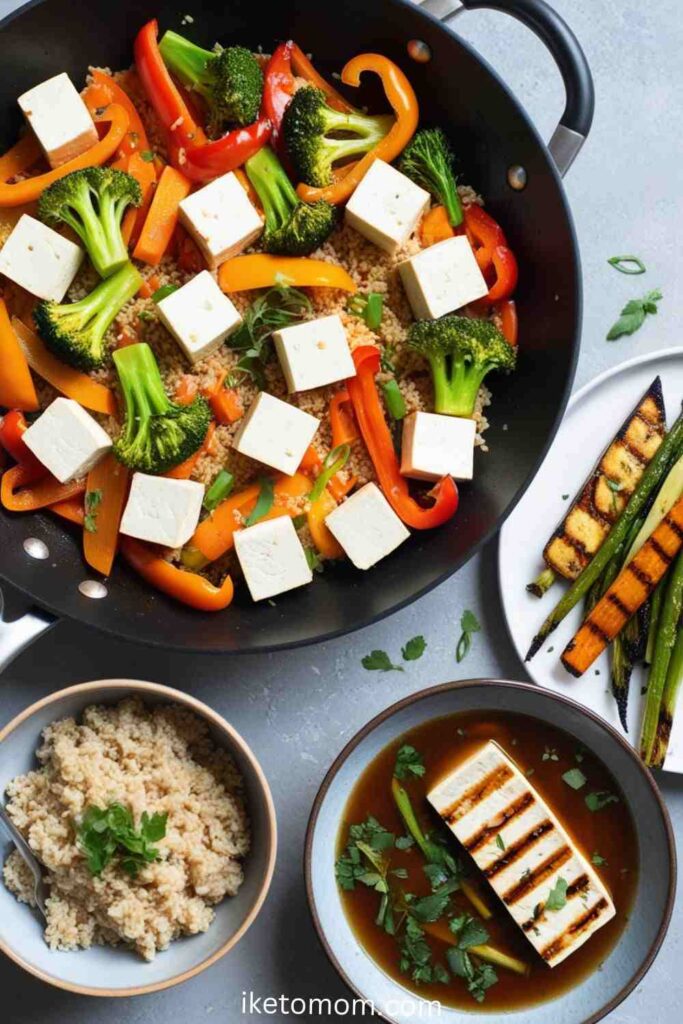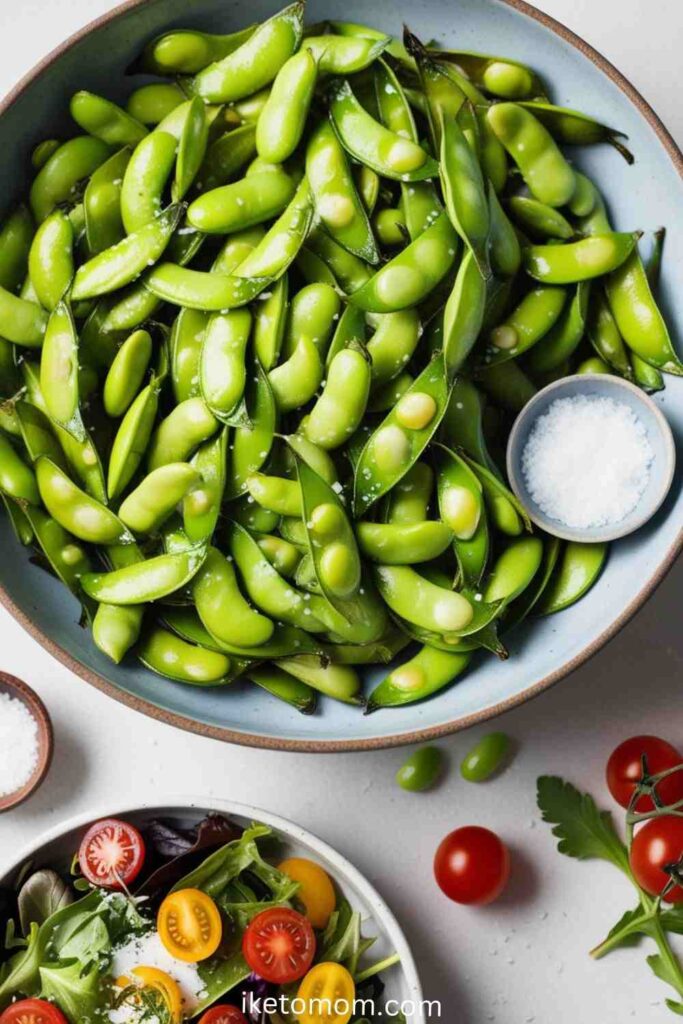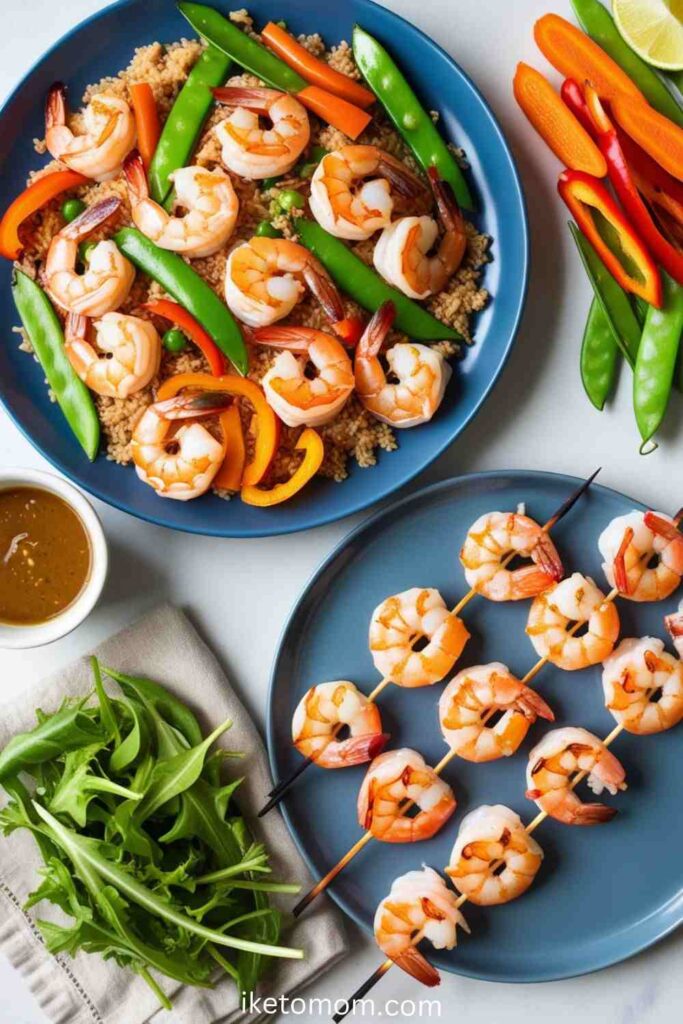Low Oxalate High Protein Foods are essential for individuals who need to manage their oxalate intake, particularly those with conditions like kidney stones. Oxalates are naturally occurring compounds found in many foods, which, when consumed in excess, can contribute to the formation of kidney stones. For people at risk of kidney stone formation, reducing oxalate-rich foods in the diet is a crucial step to help prevent these stones from developing.
Balancing protein and oxalate levels in your diet is key to maintaining overall health. Protein is an important macronutrient that supports muscle growth, immune function, and various metabolic processes. However, it’s essential to choose protein sources that are low in oxalates to minimize the risk of kidney stone formation. Incorporating low oxalate, high-protein foods allows individuals to enjoy the benefits of adequate protein intake without compromising kidney health. By focusing on these foods, people can ensure they are supporting both their protein needs and their kidney function in a healthy and balanced way.
Low Oxalate High Protein Foods
1. Chicken Breast
Nutritional Information:
A 3.5 oz (100g) serving of skinless, boneless chicken breast provides approximately 26 grams of protein and only 3 grams of fat. It is naturally low in oxalates, making it an ideal protein source for individuals who need to limit their oxalate intake.
Chicken breast is an excellent choice for a healthy, high-protein meal due to its lean profile. It offers a significant amount of protein to support muscle building, repair, and overall bodily functions, all while being low in fat and calories. This makes it a versatile option for anyone looking to maintain or lose weight while getting the necessary nutrients.
Cooking Tips and Serving Suggestions:
- Grilled or Baked: Season the chicken breast with your favorite herbs and spices (such as garlic, rosemary, or lemon) and grill or bake it for a healthy, flavorful dish. Serve with roasted vegetables or a simple side salad.
- Stir-fried: Cut the chicken breast into thin strips and stir-fry with a variety of colorful vegetables like bell peppers, broccoli, and zucchini. Add some low-sodium soy sauce or a homemade marinade for extra flavor.
- Chicken Salad: Shred or cube the cooked chicken and mix it with leafy greens, cucumbers, and a light vinaigrette dressing for a refreshing, protein-packed salad.
- Chicken Wraps or Sandwiches: Use whole-grain wraps or bread and add sliced chicken breast along with veggies for a quick and satisfying lunch.
By incorporating chicken breast into your diet, you can easily meet your protein needs while keeping oxalate intake low.
2. Eggs
Nutritional Information:
One large egg contains approximately 6 grams of protein and 5 grams of fat. Eggs are a fantastic source of high-quality protein, providing all nine essential amino acids that the body needs. They are also low in oxalates, making them an excellent choice for individuals seeking to limit oxalate intake.
Eggs are not only nutrient-dense but also versatile and easy to prepare in various ways. Whether you prefer them boiled, scrambled, or poached, they can be incorporated into numerous meals for breakfast, lunch, or dinner.
Ideas for Preparing Eggs:
- Boiled Eggs: Simply boil eggs for 10 minutes for a quick, portable snack or salad topper. Boiled eggs can be enjoyed on their own or paired with whole-grain toast and vegetables for a well-rounded meal.
- Scrambled Eggs: Whisk together eggs with a splash of milk (or dairy-free alternative) and scramble them in a non-stick pan. Add your favorite veggies, such as spinach, tomatoes, or mushrooms, for added nutrients.
- Poached Eggs: Poach eggs gently in simmering water for a soft, runny yolk. Poached eggs are perfect for topping avocado toast, salads, or grain bowls.
Eggs provide a great balance of protein and healthy fats while being low in oxalates, making them a convenient and healthy option for anyone aiming for a balanced diet.
3. Turkey
Nutritional Information:
A 4 oz serving of lean turkey breast provides approximately 28 grams of protein and just 1 gram of fat. Turkey is naturally low in oxalates, making it an excellent choice for those who need to monitor their oxalate intake while still maintaining a high-protein diet. With its lean profile, turkey is a great source of protein without excess fat, helping to support muscle growth, repair, and overall health.
Turkey is versatile and can be used in a variety of dishes, from simple sandwiches to hearty salads. It’s a great way to add lean protein to your meals while keeping the flavor and nutrition high.
Healthy Recipes Featuring Turkey:
- Turkey Sandwiches: Use whole-grain bread and layer thin slices of turkey breast with leafy greens, tomato, and a spread of mustard or hummus for a light, high-protein lunch.
- Turkey Salad: Shred or chop leftover turkey and mix it with fresh vegetables, such as cucumbers, bell peppers, and lettuce. Toss with a light vinaigrette dressing for a refreshing and nutritious salad.
- Turkey Stir-Fry: Sauté turkey breast strips with a variety of colorful vegetables like broccoli, carrots, and bell peppers. Add a low-sodium soy sauce or homemade seasoning for extra flavor.
- Turkey Lettuce Wraps: For a low-carb option, use large lettuce leaves to wrap slices of turkey breast with your favorite vegetables, creating a light and healthy alternative to traditional wraps.
By incorporating turkey into your meals, you can enjoy a lean, high-protein food that’s low in oxalates and perfect for a wide range of dishes.
4. Fish (Salmon)
Nutritional Information:
A 4 oz serving of salmon contains approximately 23 grams of protein and 10 grams of fat. While it has a slightly higher fat content compared to lean meats, most of these fats are heart-healthy omega-3 fatty acids, which are beneficial for cardiovascular health. Additionally, salmon is low in oxalates, making it an excellent choice for those managing oxalate intake while still benefiting from a nutrient-rich, high-protein food.
Salmon is not only packed with protein and healthy fats, but it also provides essential nutrients like vitamin D and selenium. It’s a versatile and flavorful fish that can be enjoyed in various preparations.
Cooking Ideas:
- Grilled Salmon: Season the salmon fillets with salt, pepper, and lemon juice, then grill them until tender and slightly charred. Serve with a side of roasted vegetables or a quinoa salad.
- Baked Salmon: Place salmon on a baking sheet, drizzle with olive oil, sprinkle with herbs such as dill or thyme, and bake at 375°F (190°C) for about 15-20 minutes. Pair with steamed asparagus or a green vegetable.
- Pan-Seared Salmon: Heat a little olive oil in a pan over medium-high heat and cook the salmon fillets for 4-5 minutes per side, until golden brown and crispy on the outside while remaining tender on the inside. Serve with a squeeze of lemon and a side of sautéed spinach or brown rice.
Incorporating salmon into your diet provides an excellent source of high-quality protein and heart-healthy fats while keeping oxalate levels low, making it an ideal choice for a nutritious meal.
5. Greek Yogurt
Nutritional Information:
One cup of plain, non-fat Greek yogurt contains about 20 grams of protein and 0 grams of fat, making it a fantastic option for those looking to boost their protein intake without adding any extra fat. Greek yogurt is not only low in oxalates but also packed with probiotics, which are beneficial for gut health. This makes it a great food choice for supporting digestion while providing high-quality protein.
Greek yogurt is incredibly versatile and can be enjoyed in various ways, making it an easy addition to any meal or snack.
Serving Suggestions:
- Smoothies: Blend Greek yogurt with fresh or frozen fruits like berries, bananas, and a splash of almond milk to create a creamy, protein-packed smoothie. Add some chia seeds or spinach for extra nutrition.
- Parfaits: Layer Greek yogurt with granola and fresh fruit like strawberries, blueberries, or kiwi for a delicious and visually appealing parfait. This makes for a great breakfast or dessert option.
- As a Topping: Use Greek yogurt as a healthy topping for dishes like baked potatoes, roasted vegetables, or salads. It can also replace sour cream in savory recipes for a protein-rich alternative.
By incorporating Greek yogurt into your diet, you can enjoy a protein-rich, low-oxalate food that supports gut health and makes for a delicious, versatile addition to various recipes.
6. Tofu
Nutritional Information:
Half a cup of firm tofu contains about 10 grams of protein and 5 grams of fat, making it an excellent plant-based protein source. Tofu is low in oxalates, making it a suitable choice for those looking to reduce oxalate intake while still meeting their protein needs. It is also versatile, easy to cook, and can take on the flavors of the dishes it’s prepared with, making it a popular choice for a variety of recipes.
Tofu is not only a great protein option for vegetarians and vegans but also a healthy alternative for anyone looking to reduce their intake of animal-based proteins.
Recipes:
- Stir-fries: Cut tofu into cubes and sauté it with a mix of colorful vegetables like bell peppers, onions, and broccoli. Add soy sauce or a homemade stir-fry sauce for flavor, and serve over brown rice or quinoa.
- Soups: Add cubes of firm tofu to vegetable or miso soup for added protein and texture. Tofu works particularly well in Asian-inspired soups like hot and sour or pho.
- Grilled Tofu: Marinate firm tofu in your favorite seasoning (soy sauce, garlic, ginger, and a bit of olive oil) and grill it for a crispy exterior and soft interior. Serve with grilled vegetables or as a topping for a salad.
Tofu is a versatile, low-oxalate food that can be used in many different dishes, making it an excellent choice for anyone looking to add more plant-based protein to their diet.
7. Cottage Cheese
Nutritional Information:
Half a cup of low-fat cottage cheese contains about 12 grams of protein and just 2 grams of fat, making it an excellent high-protein, low-fat snack. It is naturally low in oxalates, making it a great choice for people looking to reduce oxalate intake while still getting plenty of protein in their diet. Cottage cheese is also rich in calcium, which supports bone health, and it offers a satisfying, creamy texture.
Cottage cheese is incredibly versatile and can be enjoyed in a variety of ways, from sweet to savory, making it a convenient addition to any meal or snack.
Ideas for Serving:
- With Fruit: Top a bowl of cottage cheese with fresh fruit like pineapple, berries, or peaches for a refreshing, protein-packed snack. The sweetness of the fruit complements the creamy texture of the cottage cheese.
- In Salads: Add cottage cheese as a topping to fresh salads, providing a creamy, high-protein element. Pair with leafy greens, tomatoes, cucumber, and a light vinaigrette for a healthy meal.
- On Its Own: Simply enjoy a small bowl of cottage cheese on its own, perhaps with a sprinkle of black pepper or herbs for a savory snack. It’s also great with a drizzle of honey or a sprinkle of cinnamon for a sweet treat.
Cottage cheese is an easy and nutritious addition to your diet, offering a low-oxalate, high-protein option that can be enjoyed in various ways.
8. Lean Beef
Nutritional Information:
A 4 oz serving of lean ground beef provides 22 grams of protein and 9 grams of fat. It is a rich source of protein, iron, and other essential nutrients, while being low in oxalates. This makes lean beef an excellent choice for individuals who need to increase their protein intake while maintaining a balanced diet.
Lean beef offers a satisfying, nutrient-dense option for those looking to meet their protein needs without overloading on fat. It’s also an excellent source of heme iron, which is easily absorbed by the body.
Cooking Tips:
- Grilled Beef: Season lean beef patties with salt, pepper, and your favorite herbs, and grill them for a juicy, flavorful result. Serve with a side of roasted vegetables or a whole-grain bun for a complete meal.
- Roasted Beef: Roast a lean beef roast in the oven with a rub of olive oil, garlic, and rosemary. This method allows the beef to retain its tenderness while developing a rich, roasted flavor. Pair with steamed vegetables or a simple salad.
- Beef Stews: Lean beef can be added to hearty stews or soups. Cut the beef into cubes and slow-cook with vegetables, potatoes, and low-sodium broth for a comforting, nutrient-packed meal.
Incorporating lean beef into your meals provides a high-quality protein source, offering both muscle-building benefits and a healthy iron boost while keeping oxalate levels low.
9. Edamame
Nutritional Information:
One cup of cooked edamame provides about 17 grams of protein and 8 grams of fat, making it an excellent plant-based protein source. It’s also low in oxalates, which makes it a perfect snack or addition to a meal for those looking to manage oxalate intake. Edamame is rich in fiber and essential nutrients, making it a healthy, satisfying option.
Edamame can be enjoyed in various ways, from a simple snack to a more elaborate dish, making it a versatile food in any diet.
How to Serve:
- Steamed Edamame: Simply steam edamame in their pods and sprinkle with sea salt for a quick and healthy snack. This simple preparation preserves their natural flavor and nutritional benefits.
- In Salads: Add shelled edamame to salads for an extra boost of protein. Combine them with mixed greens, cucumbers, tomatoes, and a light dressing for a refreshing, protein-packed salad.
- As a Side Dish: Serve edamame as a side dish with your main course. You can toss them with a bit of olive oil and garlic or lightly season them with soy sauce for a flavorful addition to any meal.
Edamame is a tasty, low-oxalate snack that can be enjoyed in a variety of ways, providing a great plant-based protein source.
10. Shrimp
Nutritional Information:
A 3 oz serving of cooked shrimp contains about 18 grams of protein and only 1 gram of fat. Shrimp is a low-oxalate, high-protein food that is not only nutritious but also incredibly versatile. It’s an excellent choice for those looking to add lean protein to their diet while keeping oxalate levels low. Additionally, shrimp is rich in essential nutrients such as iodine, vitamin B12, and selenium, making it a well-rounded addition to a healthy meal.
Shrimp can be easily incorporated into a variety of dishes, from quick stir-fries to flavorful salads or skewers.
Recipe Ideas:
- Shrimp Stir-Fry: Sauté shrimp with colorful vegetables like bell peppers, zucchini, and snap peas in a light stir-fry sauce. Serve with brown rice or quinoa for a quick, protein-packed meal.
- Shrimp Salad: Toss cooked shrimp with mixed greens, avocado, cucumbers, and a light vinaigrette dressing. Add a sprinkle of feta cheese or nuts for extra flavor and crunch.
- Shrimp Skewers: Marinate shrimp in olive oil, garlic, and lemon juice, then skewer and grill for a tasty appetizer or main dish. Serve with a side of grilled vegetables or a fresh green salad.
Shrimp is a great way to enjoy a low-fat, high-protein meal that is both satisfying and versatile.
FAQ
1. What are low oxalate high protein foods?
Low oxalate high protein foods are foods that provide a significant amount of protein while being low in oxalates. Oxalates are naturally occurring compounds found in many plant-based foods, and they can contribute to kidney stone formation in susceptible individuals. These foods offer an excellent source of protein without the risk of high oxalate levels.
2. Why should I consider eating low oxalate high protein foods?
Eating low oxalate high protein foods is beneficial for individuals who are prone to kidney stones or need to limit their oxalate intake for other health reasons. These foods support muscle growth, repair, and overall bodily functions, while minimizing the risk of oxalate accumulation in the body.
3. What are some examples of low oxalate high protein foods?
Some examples include chicken breast, eggs, lean beef, fish like salmon, Greek yogurt, tofu, cottage cheese, edamame, shrimp, and turkey. These foods provide high-quality protein while being naturally low in oxalates.
4. Can I still get enough protein on a low oxalate diet?
Yes, it’s absolutely possible to meet your protein needs on a low oxalate diet. There are many protein-rich options that are low in oxalates, such as lean meats, fish, dairy products, and plant-based protein sources like tofu and edamame.
5. Are plant-based proteins low in oxalates?
Not all plant-based proteins are low in oxalates. While foods like tofu and edamame are low in oxalates, other plant-based sources like spinach, nuts, and certain legumes tend to be higher in oxalates. It’s important to choose plant-based proteins that are specifically low in oxalates if you need to limit your intake.

I’m Priscilla Swahn, a registered dietitian with a master’s degree in nutritional sciences. With over a decade of experience in holistic nutrition, I specialize in creating delicious keto recipes to help you enjoy a healthy lifestyle. On iKetoMom, you’ll find a variety of recipes for every meal—hearty breakfasts, satisfying lunches, mouthwatering dinners, indulgent desserts, and refreshing drinks. My recipes make keto living easy and enjoyable for the whole family. Featured in EatingWell and MindBodyGreen, I also collaborate with health centers and corporate companies to share my expertise. Join me and discover the joy of keto cooking!











